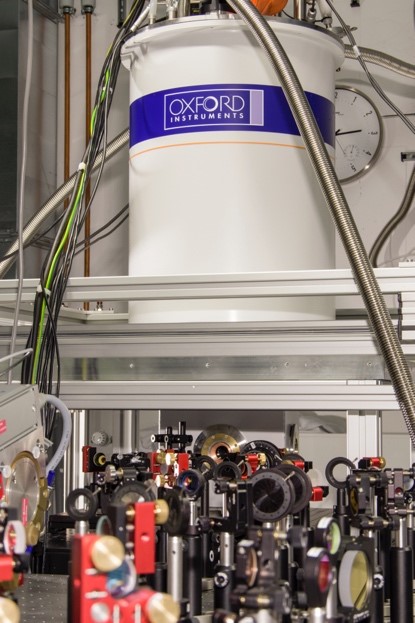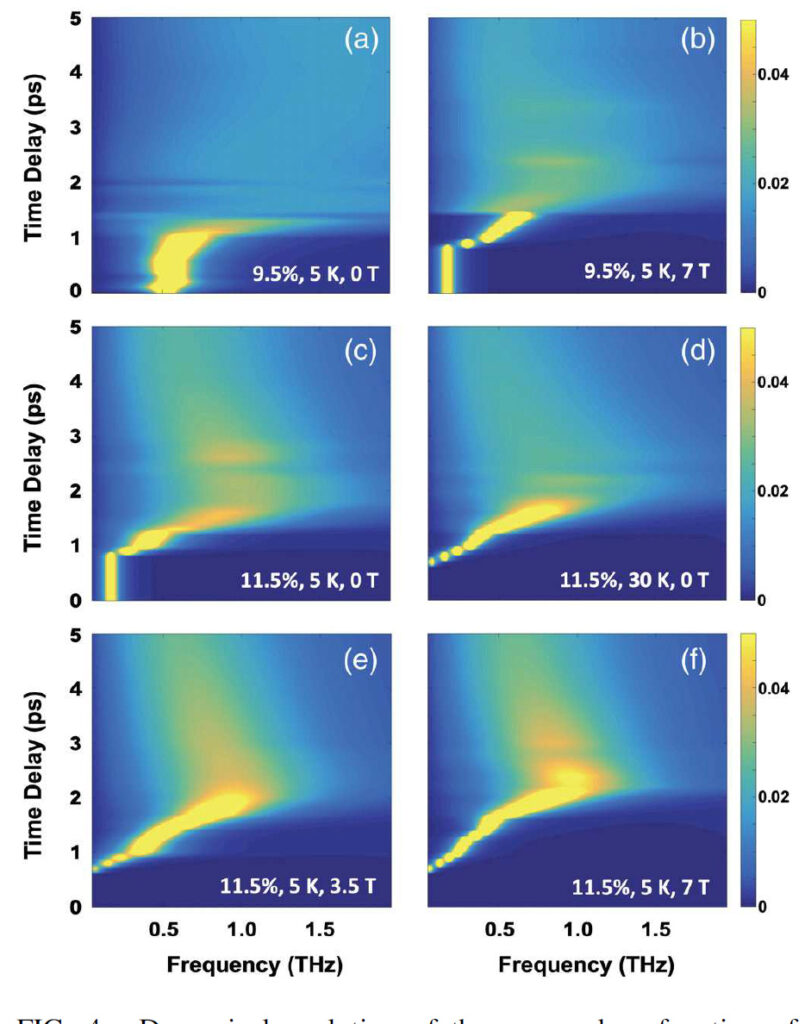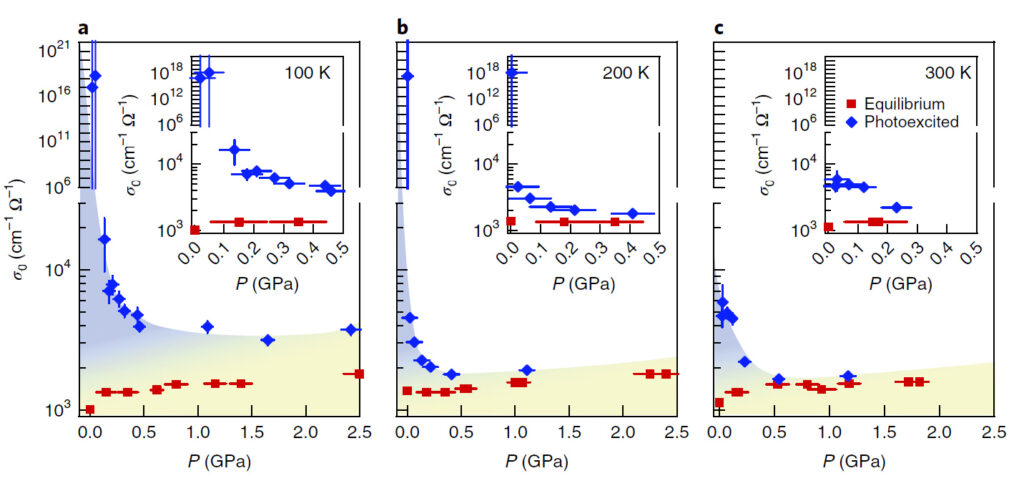In solids the application of external pressure can be used to continuously tune structural (tolerance factors, bond angles) and electronic (hopping amplitudes, nonlocal Coulomb interactions) parameters. Similarly, high magnetic fields can be used to directly alter magnetic long-range orders or modify electronic density of states. At equilibrium, experiments under these extreme conditions are key in revealing the nature of the material’s ground state and interactions at play. We aim at using these same techniques to characterize the nature of the nonequilibrium photo-induced states that we study in our group. We routinely operate diamond anvil cells and superconducting magnets that allow us to perform ultrafast pump-probe experiments at cryogenic temperatures, in magnetic fields up to 7 T or at hydrostatic pressures up to 10 GPa.

Relevant publications
Magnetic-Field Tuning of Light-Induced Superconductivity in Striped La2−xBaxCuO4
D. Nicoletti, D. Fu, O. Mehio, S. Moore, A. S. Disa, G. D. Gu, and A. Cavalleri
Physical Review Letters, 121, 267003 (2018)
Abstract
Optical excitation of stripe-ordered La2−xBaxCuO4 has been shown to transiently enhance super-conducting tunneling between the CuO2 planes. This effect was revealed by a blueshift, or by the appearance of a Josephson plasma resonance in the terahertz-frequency optical properties. Here, we show that this photoinduced state can be strengthened by the application of high external magnetic fields oriented along the c axis. For a 7 T field, we observe up to a tenfold enhancement in the transient interlayer phase correlation length, accompanied by a twofold increase in the relaxation time of the photoinduced state. These observations are highly surprising, since static magnetic fields suppress interlayer Josephson tunneling and stabilize stripe order at equilibrium. We interpret our data as an indication that optically enhanced interlayer coupling in La2−xBaxCuO4 does not originate from a simple optical melting of stripes, as previously hypothesized. Rather, we speculate that the photoinduced state may emerge from activated tunneling between optically excited stripes in adjacent planes.
Pressure tuning of light-induced superconductivity in K3C60
A. Cantaluppi, M. Buzzi, G. Jotzu, D. Nicoletti, M. Mitrano, D. Pontiroli, M. Riccò, A. Perucchi, P. Di Pietro, A. Cavalleri
Nature Physics, 14, 837–841 (2018)
Abstract
Optical excitation at terahertz frequencies has emerged as an effective means to dynamically manipulate complex materials. In the molecular solid K3C60, short mid-infrared pulses transform the high-temperature metal into a non-equilibrium state with the optical properties of a superconductor. Here we tune this effect with hydrostatic pressure and find that the superconducting-like features gradually disappear at around 0.3 GPa. Reduction with pressure underscores the similarity with the equilibrium superconducting phase of K3C60, in which a larger electronic bandwidth induced by pressure is also detrimental for pairing. Crucially, our observation excludes alternative interpretations based on a high-mobility metallic phase. The pressure dependence also suggests that transient, incipient superconductivity occurs far above the 150 K hypothesized previously, and rather extends all the way to room temperature.
Pressure-Dependent Relaxation in the Photoexcited Mott Insulator ET-F2 TCNQ: Influence of Hopping and Correlations on Quasiparticle Recombination Rates
M. Mitrano, G. Cotugno, S.R. Clark, R. Singla, S. Kaiser, J. Stähler, R. Beyer, M. Dressel, L. Baldassarre, D. Nicoletti, A. Perucchi, T. Hasegawa, H. Okamoto, D. Jaksch and A. Cavalleri
Physical Review Letters, 112, 117801 (2014)
Abstract
We measure the ultrafast recombination of photoexcited quasiparticles (holon-doublon pairs) in the one dimensional Mott insulator ET–F2TCNQ as a function of external pressure, which is used to tune the electronic structure. At each pressure value, we first fit the static optical properties and extract the electronic bandwidth t and the intersite correlation energy V. We then measure the recombination times as a function of pressure, and we correlate them with the corresponding microscopic parameters. We find that the recombination times scale differently than for metals and semiconductors. A fit to our data based on the time-dependent extended Hubbard Hamiltonian suggests that the competition between local recombination and delocalization of the Mott-Hubbard exciton dictates the efficiency of the recombination.




